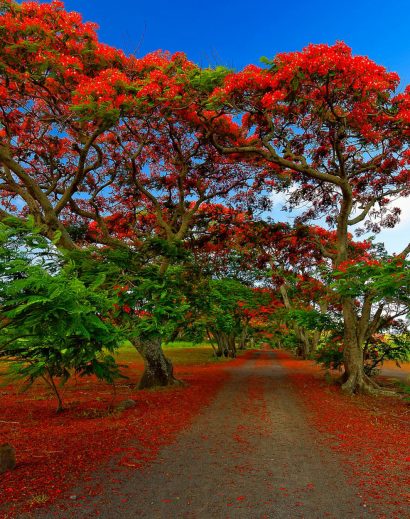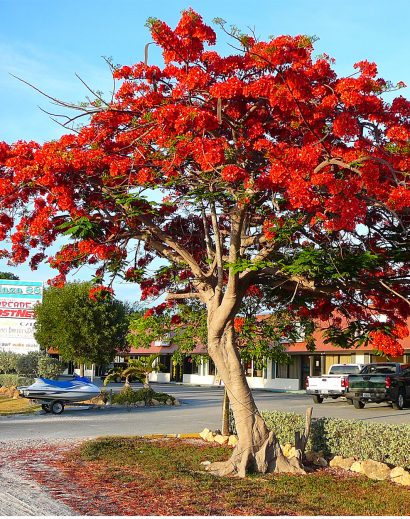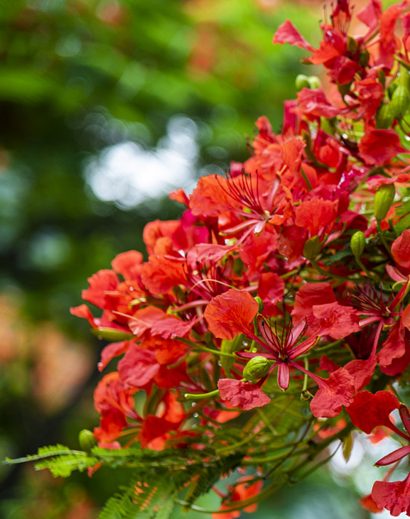“Flamboyant trees” can refer to several species of flowering trees known for their vibrant and showy flowers. One of the most famous trees referred to as “flamboyant” is the Royal Poinciana (Delonix regia), also known as the flamboyant tree, flame tree, or flame of the forest. Here are some key characteristics and information about flamboyant trees:
- Scientific Name: Delonix regia
- Appearance: The Royal Poinciana is a deciduous tree with large, fern-like, bipinnate leaves. It is most famous for its striking red or orange-red flowers, which resemble the shape of a butterfly. The flowers grow in clusters at the ends of branches.
- Blooming Season: Flamboyant trees typically bloom during the late spring to early summer, but the exact timing can vary depending on the climate and location.
- Geographical Distribution: Native to Madagascar, the Royal Poinciana is now grown in tropical and subtropical regions around the world. It is often planted for its ornamental value and is especially popular in the Caribbean, Southeast Asia, and parts of Africa.
- Cultural Significance: The Royal Poinciana is the national flower of Barbados and is associated with tropical beauty and flamboyance. It is often planted along roadsides, in parks, and in gardens for its dazzling display of flowers.
- Foliage: In addition to its vibrant flowers, the Royal Poinciana has a lush, green canopy of foliage, making it a popular shade tree in many tropical locations.
- Legume Family: It belongs to the legume family (Fabaceae), and like many legumes, it has pods containing seeds. The seeds of the Royal Poinciana are somewhat toxic if ingested.
- Caring for Flamboyant Trees: These trees thrive in full sun and well-draining soil. They are relatively drought-tolerant once established but benefit from regular watering during dry spells. Pruning can help maintain their shape and size.
Flamboyant trees are renowned for their breathtaking display of fiery flowers, making them a favorite choice for landscaping in warm, tropical regions. They are often associated with beauty, color, and the vibrancy of tropical climates.






Reviews
There are no reviews yet.